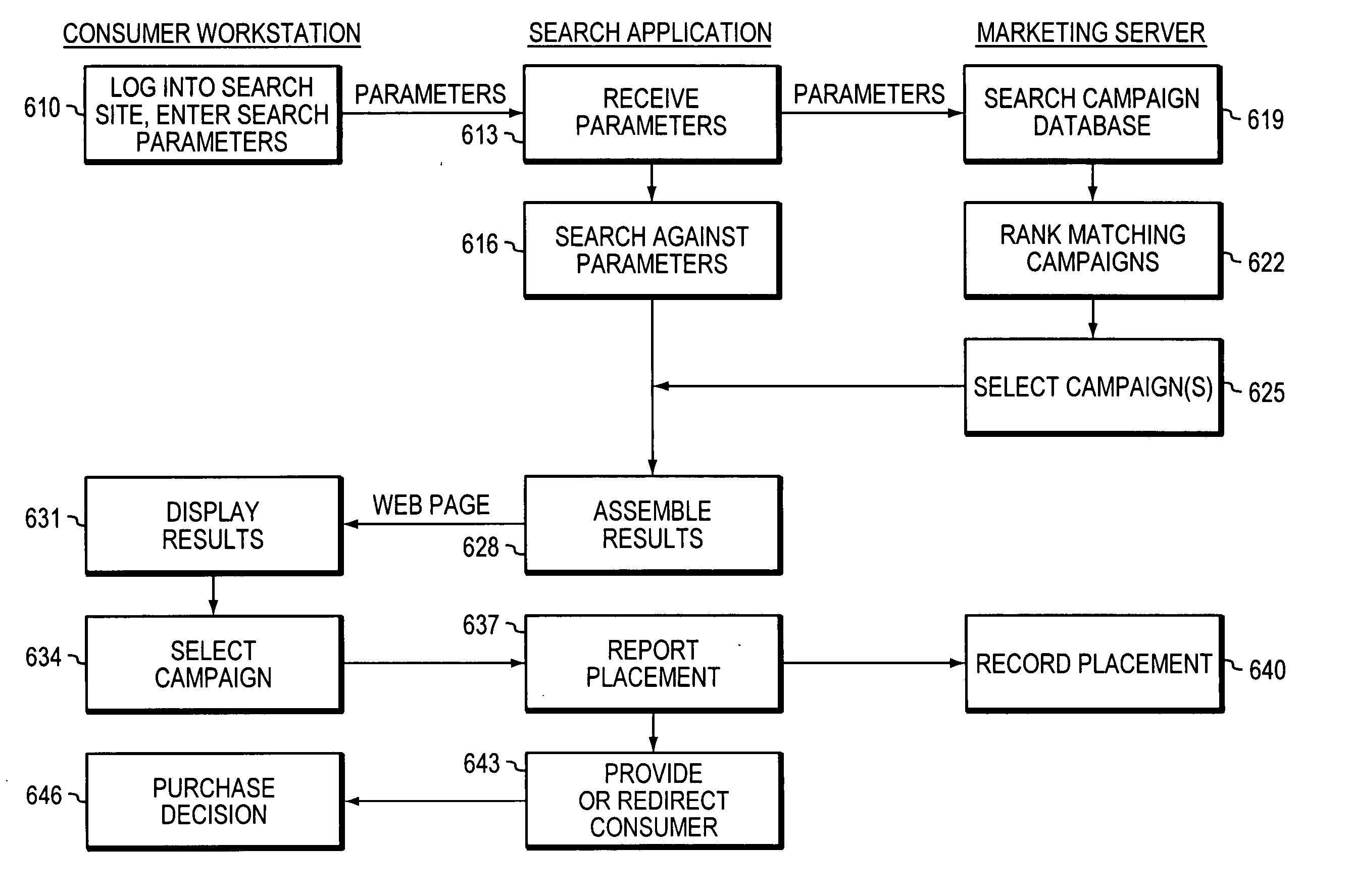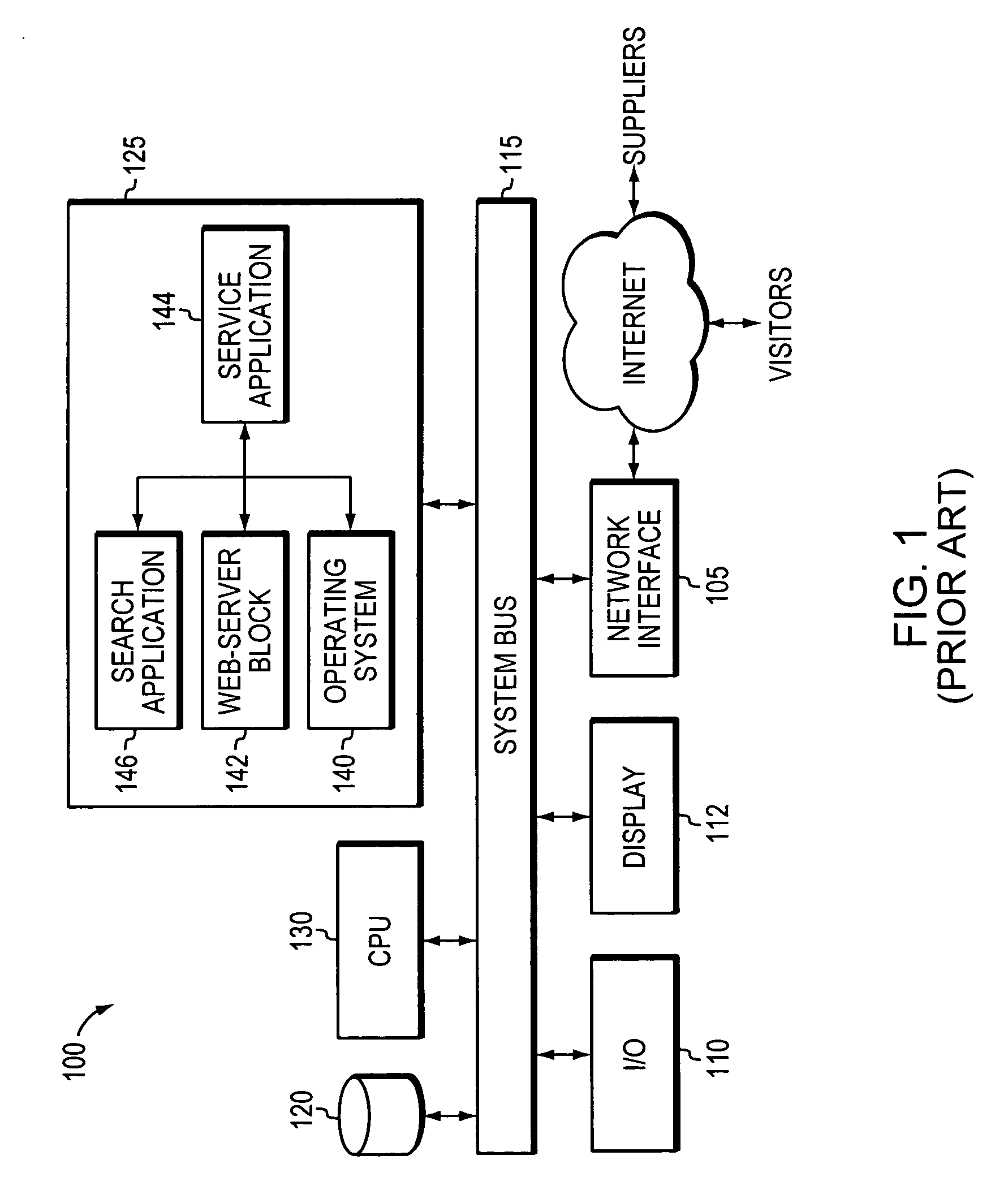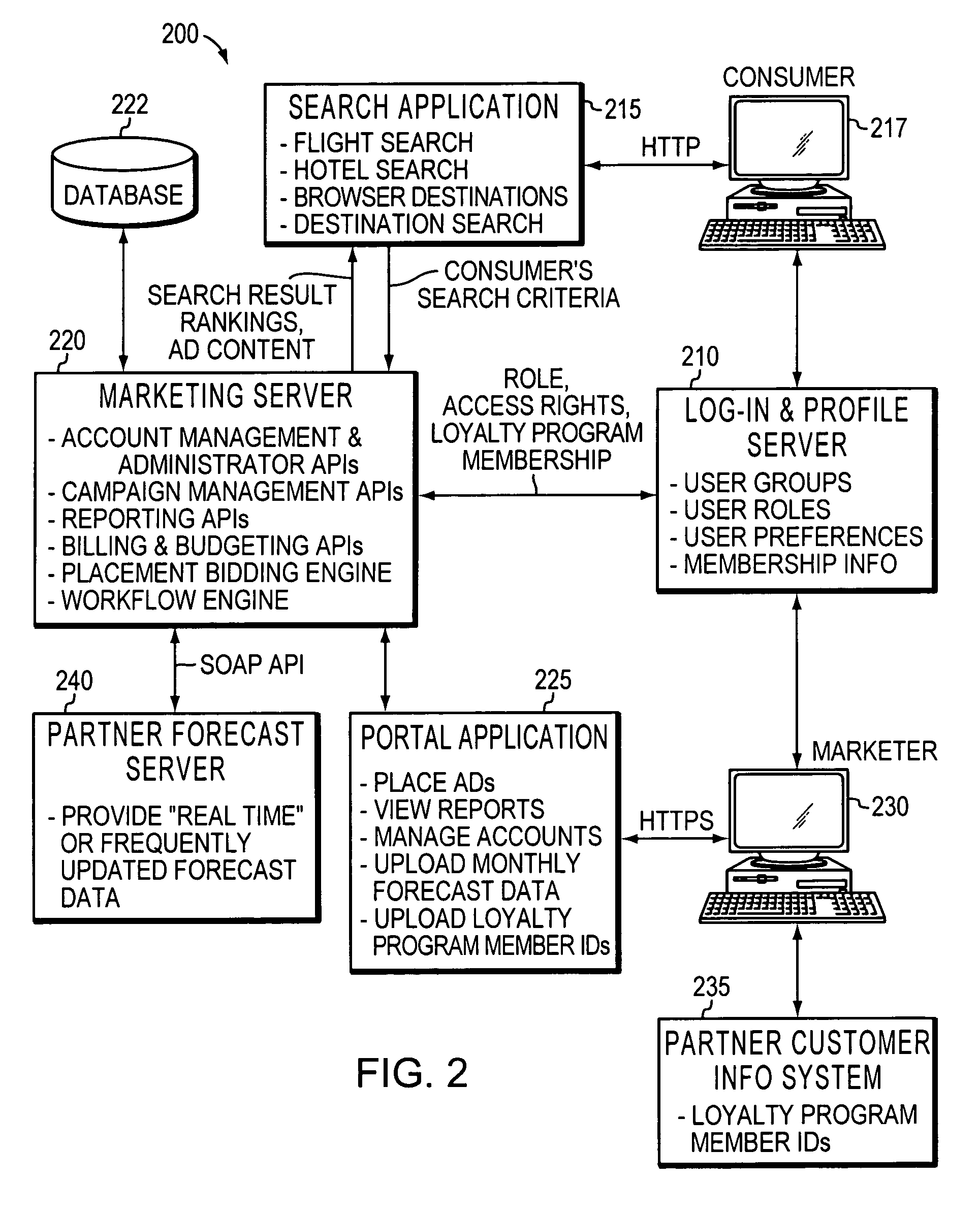[0004] The present invention allows suppliers of goods and / or services subject to shifts in capacity utilization to design and implement marketing campaigns around utilization forecasts, targeting marketing expenditures on periods of excess capacity rather than periods without excess capacity. The invention is especially well suited to use in conjunction with online interface tools, such as travel sites, that specifically address the target market. Visitors to such
a site have, merely by virtue of their visit, identified themselves as potential customers of a supplier such as a hotel, and the information they provide in the ordinary course of interacting with the site can be used to determine the relevance of a promotional campaign to them. In recognition of the fact that multiple suppliers may seek to target a particular
consumer (i.e., site visitor) the invention permits suppliers to enter, before their promotional campaigns take effect, bids on consumers fulfilling specified criteria. When a
consumer visiting the site is identified as fulfilling the campaign criteria of more than one supplier, the campaign shown to the consumer is selected based on supplier bids and, if desired, other
scoring criteria as well. If the site's policies allow more than one campaign at a time to be advanced to the consumer, those associated with higher scores are selected. This approach ensures that limited presentation space is efficiently allocated and that individual marketers retain control over campaign expenditures.
[0006] The present invention allows the marketer to specify a consumption pattern (e.g., the nights that the guest will stay in the hotel) as campaign targeting criteria. Because a travel site typically gathers a customer's consumption preferences (an arrival date, a length of stay, a destination) in the course of providing the very information a visitor seeks, a campaign implemented via such
a site begins with a targeted audience. Using the invention, marketers can limit their campaigns to customers whose consumption patterns—gleaned as the consumer interacts with the travel site in the ordinary course of business—fit their projected capacity utilization. Moreover, features of the campaign can shift as the relevant promotional period approaches, depending, in an ongoing manner, on the campaign's success. This facilitates tactical responses to short-term changes in demand and marketing campaigns that isolate periods where capacity is not fully utilized. In some embodiments, a supplier is able to alter variables such as pricing, consumer targeting, or even the intensity of the campaign itself on a dynamic basis in response to changing
market conditions. Marketing efforts may, for example, simply cease when a desired level of utilization is reached. The present invention may also permit the supplier to tie marketing campaigns to specific market segments or even specific individuals. The supplier may, for example, specify criteria determining consumer eligibility for the campaign, thereby limiting efforts to individuals fitting the defined profile, or may segment consumers into categories (based, for example, on individual identity and / or defined behavior patterns) each of which is approached with different offers.
[0008] In a second aspect, the invention relates to a
system for defining and executing a marketing campaign in connection with
a site facilitating interactive searches for items characterized by fixed capacity and deferred consumption; site visitors submit preference information relating to consumption and thereby obtain information concerning availability of the items. The
system comprises a
database for storing entries characterizing marketing campaigns each comprising a promotion and execution criteria, relating each marketing campaign to a supplier of the items, and associating with each supplier a bid for presentation of the corresponding marketing campaign to visitors to the site. An execution module assesses the preference information obtained from at least some visitors to the site for conformance to the execution criteria, and upon detection of a match between a visitor's preference information and the execution criteria of more than one marketing campaign, offers to the visitor one or more promotions based at least in part on the bids.
[0009] In a third aspect, the invention relates to method of defining and executing a marketing campaign in connection with a site facilitating interactive searches for items characterized by fixed capacity and deferred consumption; site visitors submit preference information relating to consumption and thereby obtain information concerning availability of the items. The method comprises receiving, from each of a plurality of suppliers of the items, a marketing campaign comprising a promotion and execution criteria relating thereto. The execution criteria are dynamically updated based on parameters corresponding to a capacity forecast, and preference information obtained from at least some visitors to the site is assessed for conformance to the updated execution criteria. Upon detection of a match between a visitor's preference information and the execution criteria of more than one marketing campaign, the visitor is offered one or more promotions.
[0010] In a fourth aspect, the invention relates to a
system for defining and executing a marketing campaign in connection with a site facilitating interactive searches for items characterized by fixed capacity and deferred consumption; site visitors submit preference information relating to consumption and thereby obtain information concerning availability of the items. The system comprises a
database for storing entries characterizing marketing campaigns each comprising a promotion and execution criteria and relating each marketing campaign is related to a supplier of the items. An execution module dynamically updates the execution criteria based on parameters corresponding to a capacity forecast. The execution module assesses the preference information obtained from at least some visitors to the site for conformance to the updated execution criteria, and upon detection of a match between a visitor's preference information and the execution criteria of more than one marketing campaign, offers to the visitor one or more promotions.
 Login to View More
Login to View More  Login to View More
Login to View More 


